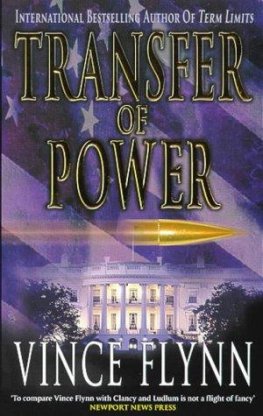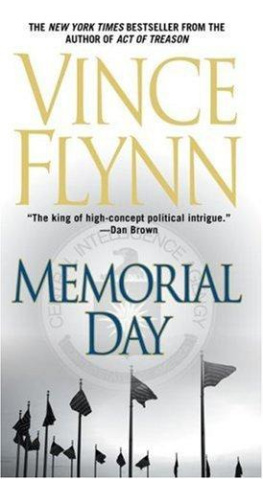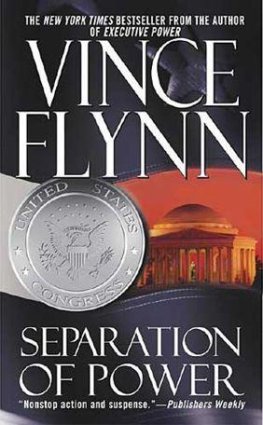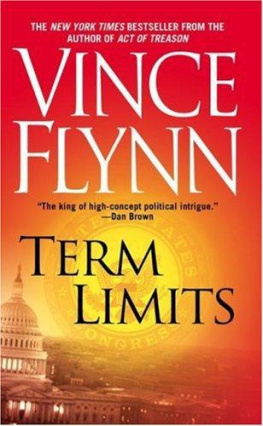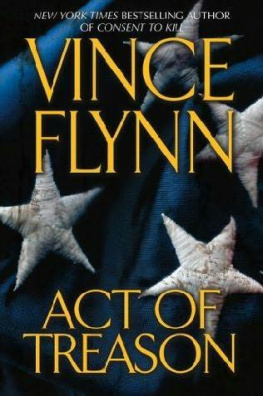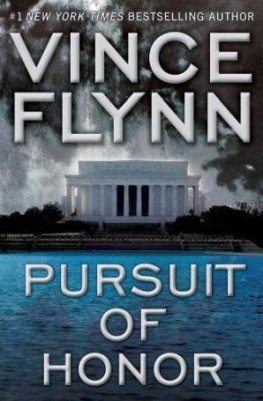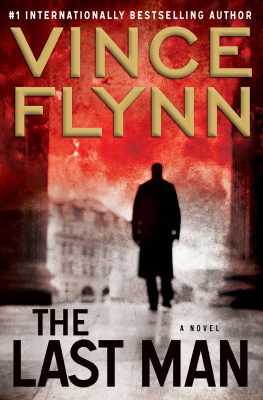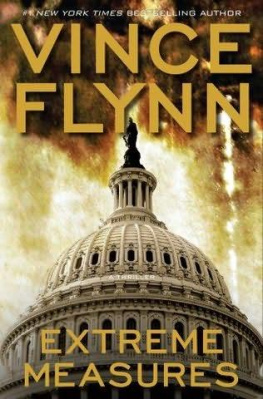Vince Flynn - Transfer of Power
Here you can read online Vince Flynn - Transfer of Power full text of the book (entire story) in english for free. Download pdf and epub, get meaning, cover and reviews about this ebook. year: 1999, genre: Detective and thriller. Description of the work, (preface) as well as reviews are available. Best literature library LitArk.com created for fans of good reading and offers a wide selection of genres:
Romance novel
Science fiction
Adventure
Detective
Science
History
Home and family
Prose
Art
Politics
Computer
Non-fiction
Religion
Business
Children
Humor
Choose a favorite category and find really read worthwhile books. Enjoy immersion in the world of imagination, feel the emotions of the characters or learn something new for yourself, make an fascinating discovery.
- Book:Transfer of Power
- Author:
- Genre:
- Year:1999
- Rating:5 / 5
- Favourites:Add to favourites
- Your mark:
- 100
- 1
- 2
- 3
- 4
- 5
Transfer of Power: summary, description and annotation
We offer to read an annotation, description, summary or preface (depends on what the author of the book "Transfer of Power" wrote himself). If you haven't found the necessary information about the book — write in the comments, we will try to find it.
Transfer of Power — read online for free the complete book (whole text) full work
Below is the text of the book, divided by pages. System saving the place of the last page read, allows you to conveniently read the book "Transfer of Power" online for free, without having to search again every time where you left off. Put a bookmark, and you can go to the page where you finished reading at any time.
Font size:
Interval:
Bookmark:
Transfer of Power
(Mitch Rapp 01)
By
Vince Flynn
For Terence and Kathleen Flynn
Out of respect for the United States Secret Service and the security of the president, certain facts regarding the layout of the White House and Secret Service tactics have either been changed or omitted.
Washington, D.C.
A FINE MIST fell from the darkening spring sky as the black limousine turned off of E Street. The armor-plated car weaved through the concrete-and-steel barricades at a speed suggesting urgency. As the limousine turned onto West Executive Drive, it slowed briefly for the heavy black gate to open, and then sped forward. After splashing through several puddles, the limo came to an abrupt stop in front of the ground-floor entrance to the West Wing of the White House.
The rear passenger door opened immediately, and Dr. Irene Kennedy stepped from the car. She walked under the long off-white awning that extended from the building to the curb and paused to let her boss catch up. Thomas Stansfield slowly climbed out of the limo and buttoned the jacket of his charcoal gray suit. At seventy-nine years of age Stansfield was an icon in the intelligence community. His career dated all the way back to World War II and the OSS, the precursor to the CIA.
Stansfield had been one of Wild Bill Donovan's recruits almost sixty years earliera different war fought by a different breed. Stansfield was the last one. Now they were all gone, retired or dead, and it wouldn't be much longer before he turned over the reins of power at the much-maligned and embattled intelligence agency.
The CIA had changed during his tenure. More precisely, the threats had changed, and the CIA was forced to change with them. The old static days of a two-superpower world were long gone, replaced by small regional conflicts and the ever-growing threat of terrorism. As Stansfield closed out his career, this was what bothered him most. The threat of one individual bringing biological, chemical, or nuclear annihilation to America was becoming more and more plausible.
Stansfield looked up at the lazy mist that was falling from the early evening sky. A light spray dusted his face, and the silver-haired director of the CIA blinked. Something was bothering him, and he couldn't quite put his finger on it.
Stansfield gave the darkening sky one last look and then stepped under the awning.
Kennedy continued through the double doors, where two uniformed Secret Service officers were standing post, and started down the long hall.
This was the first floor of the West Wing. The president's office was located on the floor above, but that was not where they would be meeting. Irene Kennedy sped ahead, while Stansfield followed at his always even pace.
Down the hallway, on the right, a U.S. Navy officer stood in his cleanly pressed black uniform with his hands clasped firmly in front of him.
"Good evening. Dr. Kennedy. Everything is ready. The generals and the president are waiting for you. "The watch officer of the White House Situation Room gestured to his left.
"Thank you. Commander Hicks," replied Kennedy as she walked past the naval officer.
They went down several steps, took a right, and came to a secure door with a camera mounted above it. To the left was a black-and-gold plaque with the words:
"White House Situation Room: Restricted Access."
The lock on the door buzzed, and Kennedy pushed the door open. She entered and turned to her left, into the Situation Room's new conference room. Director Stansfield followed her, and Commander Hicks closed the soundproof door behind them.
President Robert Hayes, dressed in a tuxedo, stood at the far end of the room and listened intently to the two men in front of him. The first.
General Flood, was the chairman of the Joint Chiefs. Flood was six four and weighed almost two hundred seventy pounds. The second man was General Campbell, a half foot shorter than his superior and one hundred pounds lighter. Campbell was the commander of the U.S. military's Joint Special Operations Command, or JSOC. Before taking his most recent job, he had proudly commanded the famous 82nd Airborne Division and the 181st Airborne Corps.
President Hayes had been in office for only five months, and thus far had a decent working relationship with both the Pentagon and the CIA.
Before being elected president, Robert Xavier Hayes had served as both U.S. congressman and senator. The Democrat from Ohio had been elected to the highest office in the land largely because he had a very clean personal life and was seen as someone who could mend the ever-deepening divide between the two parties.
The previous administration had been rife with scandal, so much so that the American people had overwhelmingly picked someone whose personal life could pass the rigorous scrutiny of the press. Hayes was happily married and had three children in their thirties, all of whom had managed to stay off the tabloid covers and live relatively normal lives.
Kennedy set her briefcase on a chair near the end of the long table and said, "If everyone will be seated, we can get started." She felt rushed.
Things were coming together at a frantic pace.
Director Stansfield greeted the two generals and the president.
No one was in a talkative mood. The president worked his way around to the opposite end of the table and sat in his high-backed leather chair.
All four walls of the room were covered with dark wood except a square section behind the president.
That portion of the wall was white, and in the middle of it was the circular seal of the president of the United States.
With the president at the head of the table, the two generals sat on his right and Director Stansfield on his left. Kennedy handed each of the men identical folders that were sealed with red tape and marked Top Secret.
"Please feel free to open the files while I get the rest of the materials ready." Kennedy pushed some other shoulder-length brown hair back behind her ear. After several seconds of digging through her briefcase, she found the right disk and inserted it into the A drive of the computer under the podium.
About sixty seconds later the director of the CIA's Counterterrorism Center was ready to start.
A map of the Persian Gulf appeared on the large screen to Kennedy's right, and she began, "Mr. President, four days ago we inserted one of our people into the Iranian city of Bandar Abbas. Our man was operating on some information he received that Sheik Fara Harut might be in the city." Kennedy pressed a button, and the screen changed from the map to a grainy black-and-white photograph of a bearded man in a turban.
"Fara Harut, shown here in this 1983 photograph, is the religious leader of the militant Islamic group Hezbollah. He has very strong ties to the religious conservatives in Iran."
Kennedy glanced sideways at the president and added, "You may have noted some mention of him in your PDB." Kennedy was referring to the President's Daily Brief, an intelligence summary given to him every morning by the CIA.
The president nodded. "I recall the name."
Kennedy pressed a button, and a new photo appeared on the screen, this time of a much younger, clean-shaven, and handsome individual. "This is Rafique Ariz. It was taken in the late seventies, when Aziz was obtaining a degree in electrical engineering from American University in Beirut."
The president nodded reluctantly and said, "I am definitely familiar with this individual."
Kennedy nodded.
"Well, you might not be familiar with this most recent development." The doctor pointed to the screen at the front of the room, and a series of photos played out showing charred buses and grotesque, bloody bodies.
Font size:
Interval:
Bookmark:
Similar books «Transfer of Power»
Look at similar books to Transfer of Power. We have selected literature similar in name and meaning in the hope of providing readers with more options to find new, interesting, not yet read works.
Discussion, reviews of the book Transfer of Power and just readers' own opinions. Leave your comments, write what you think about the work, its meaning or the main characters. Specify what exactly you liked and what you didn't like, and why you think so.

